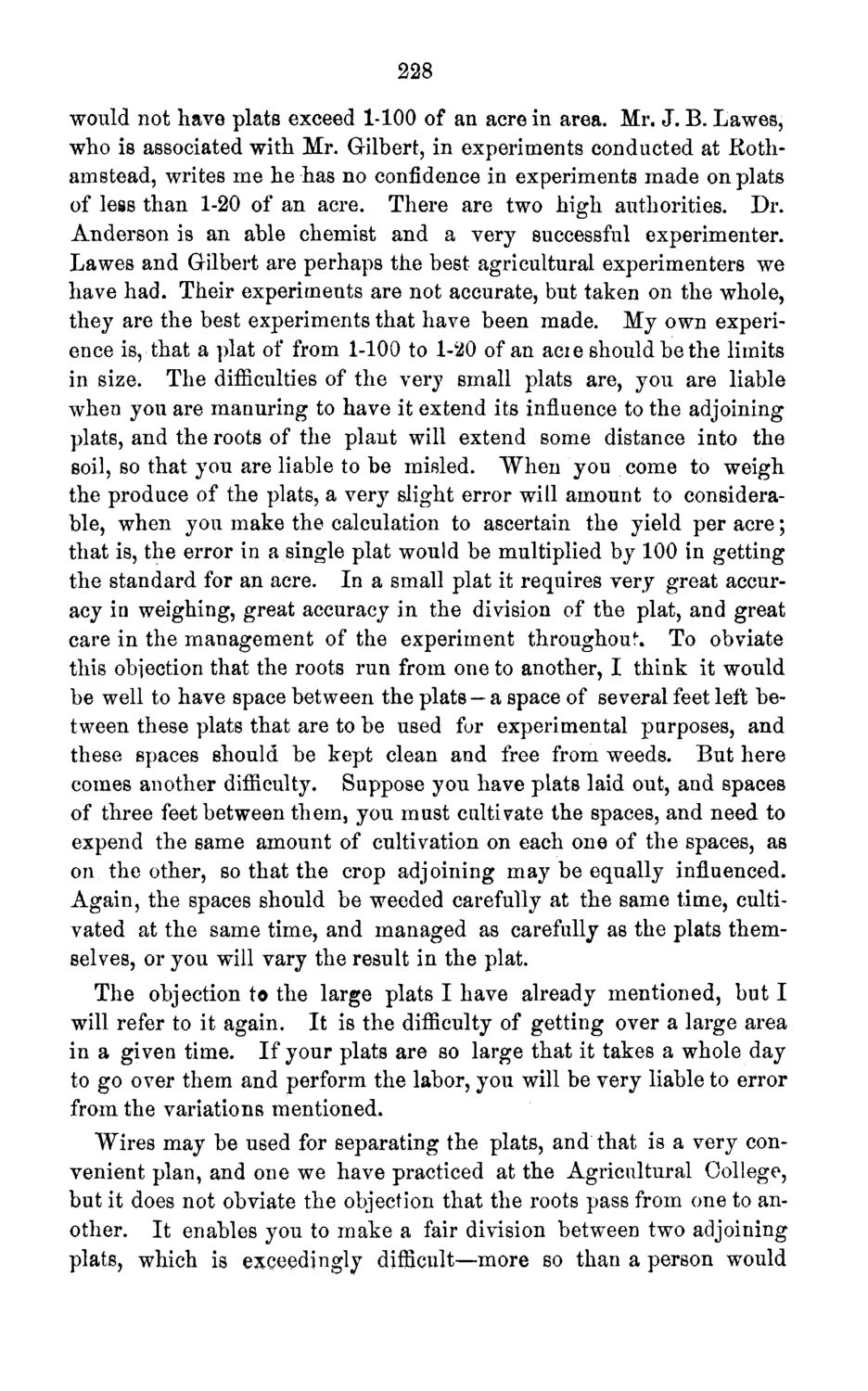| |
| |
Caption: Board of Trustees Minutes - 1871
This is a reduced-resolution page image for fast online browsing.

EXTRACTED TEXT FROM PAGE:
228 would not have plats exceed 1-100 of an acre in area. Mr. J. B. Lawes, who is associated with Mr. Gilbert, in experiments conducted at Kothamstead, writes me he has no confidence in experiments made on plats of less than 1-20 of an acre. There are two high authorities. Dr. Anderson is an able chemist and a very successful experimenter. Lawes and Gilbert are perhaps the best agricultural experimenters we have had. Their experiments are not accurate, but taken on the whole, they are the best experiments that have been made. My own experience is, that a plat of from 1-100 to 1-20 of an acre should be the limits in size. The difficulties of the very small plats are, you are liable when you are manuring to have it extend its influence to the adjoining plats, and the roots of the plant will extend some distance into the soil, so that you are liable to be misled. When you come to weigh the produce of the plats, a very slight error will amount to considerable, when you make the calculation to ascertain the yield per acre; that is, the error in a single plat would be multiplied by 100 in getting the standard for an acre. In a small plat it requires very great accuracy in weighing, great accuracy in the division of the plat, and great care in the management of the experiment throughout. To obviate this obiection that the roots run from one to another, I think it would be well to have space between the plats — a space of several feet left between these plats that are to be used for experimental purposes, and these spaces should be kept clean and free from weeds. But here comes another difficulty. Suppose you have plats laid out, and spaces of three feet between them 3 you must cultivate the spaces, and need to expend the same amount of cultivation on each one of the spaces, as on the other, so that the crop adjoining may be equally influenced. Again, the spaces should be weeded carefully at the same time, cultivated at the same time, and managed as carefully as the plats themselves, or you will vary the result in the plat. The objection to the large plats I have already mentioned, but I will refer to it again. It is the difficulty of getting over a large area in a given time. If your plats are so large that it takes a whole day to go over them and perform the labor, you will be very liable to error from the variations mentioned. Wires may be used for separating the plats, and that is a very convenient plan, and one we have practiced at the Agricultural College, but it does not obviate the objection that the roots pass from one to another. It enables you to make a fair division between two adjoining plats, which is exceedingly difficult—more so than a person would
| |